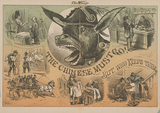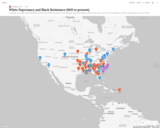
The lesson focuses on the first Asian Americans to run for Congress - Patsy Mink and Daniel Inouye - who paved the way for future generations of Asian Americans to be politically active.
2021 Social Science Standards Integrated with Ethnic Studies:
Civics and Government: 7.5, 8.2, 8.7, 8.8, HS.2, HS.6, HS.9, HS.11
Historical Knowledge: 8.25, 8.27, HS.52, HS.60, HS.64, HS.65, HS.66
Historical Thinking: 7.25, 8.31, 8.32, HS.67, HS.68
Social Science Analysis: 7.27, 7.29, 8.33, 8.36, HS.72, H.73, HS.78
- Subject:
- English Language Arts
- U.S. History
- Material Type:
- Lesson Plan
- Author:
- The Asian American Education Project
- Date Added:
- 02/01/2023

























































